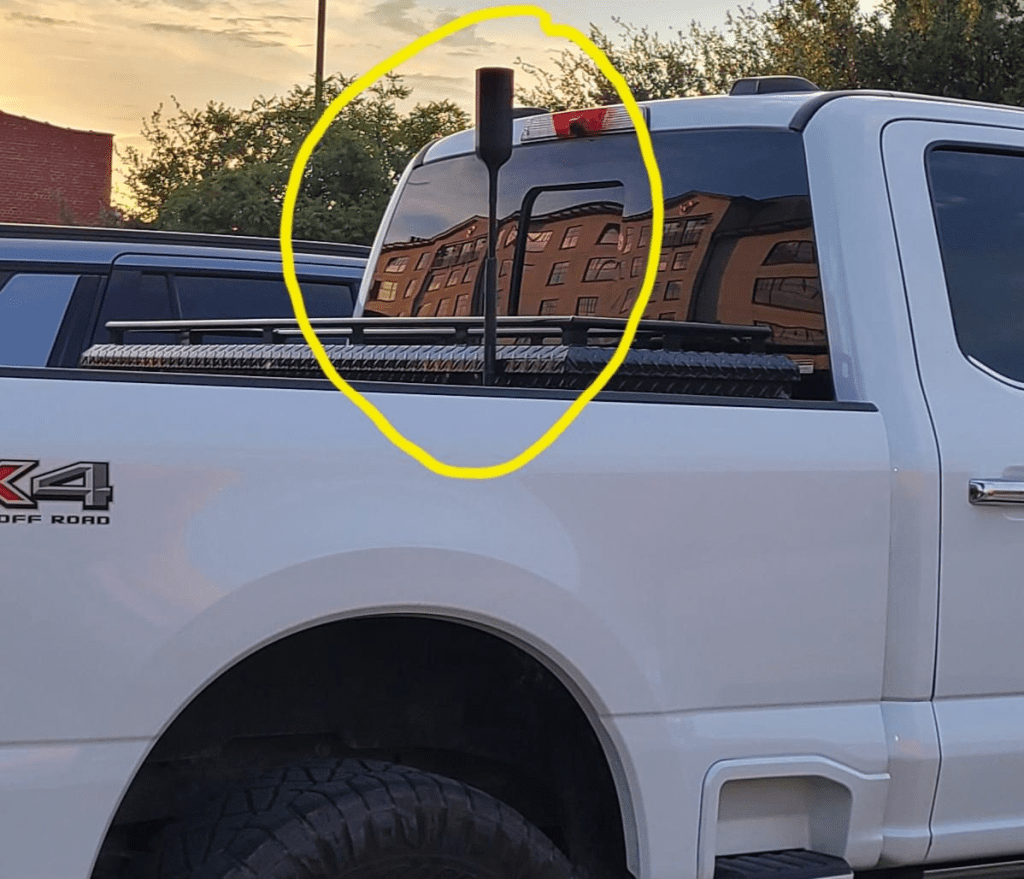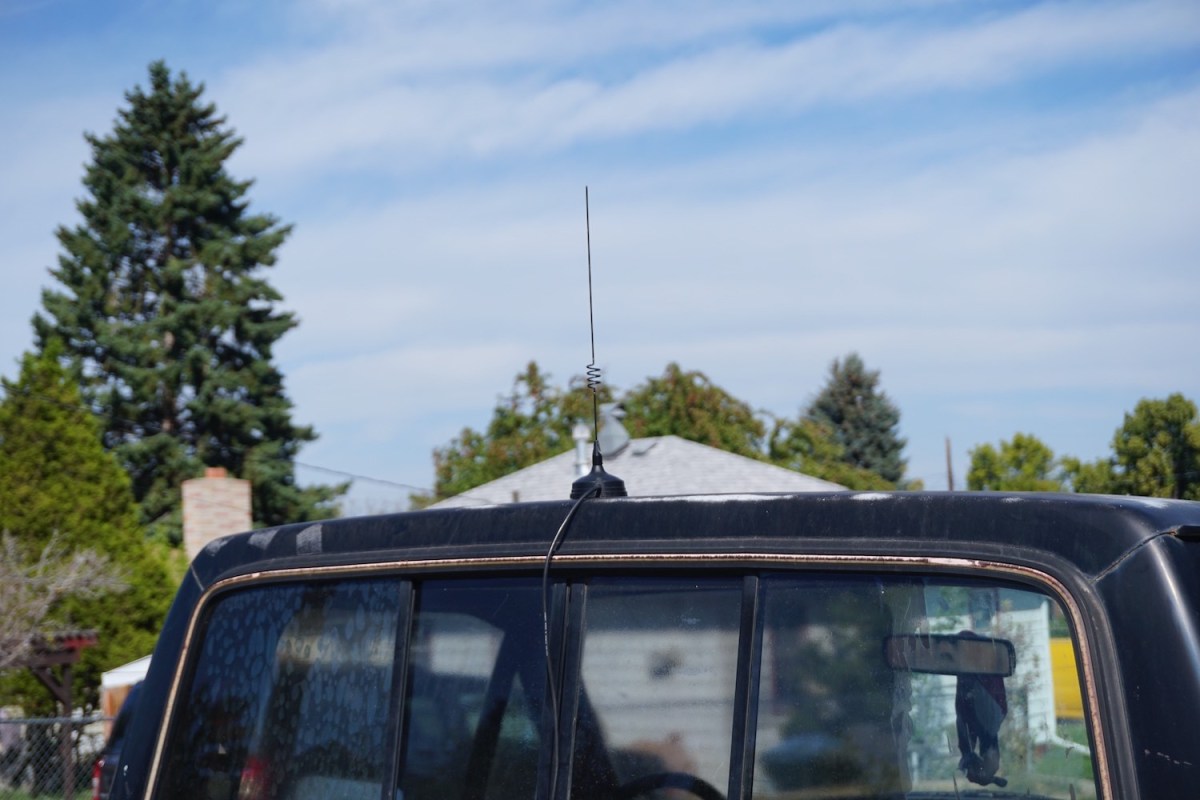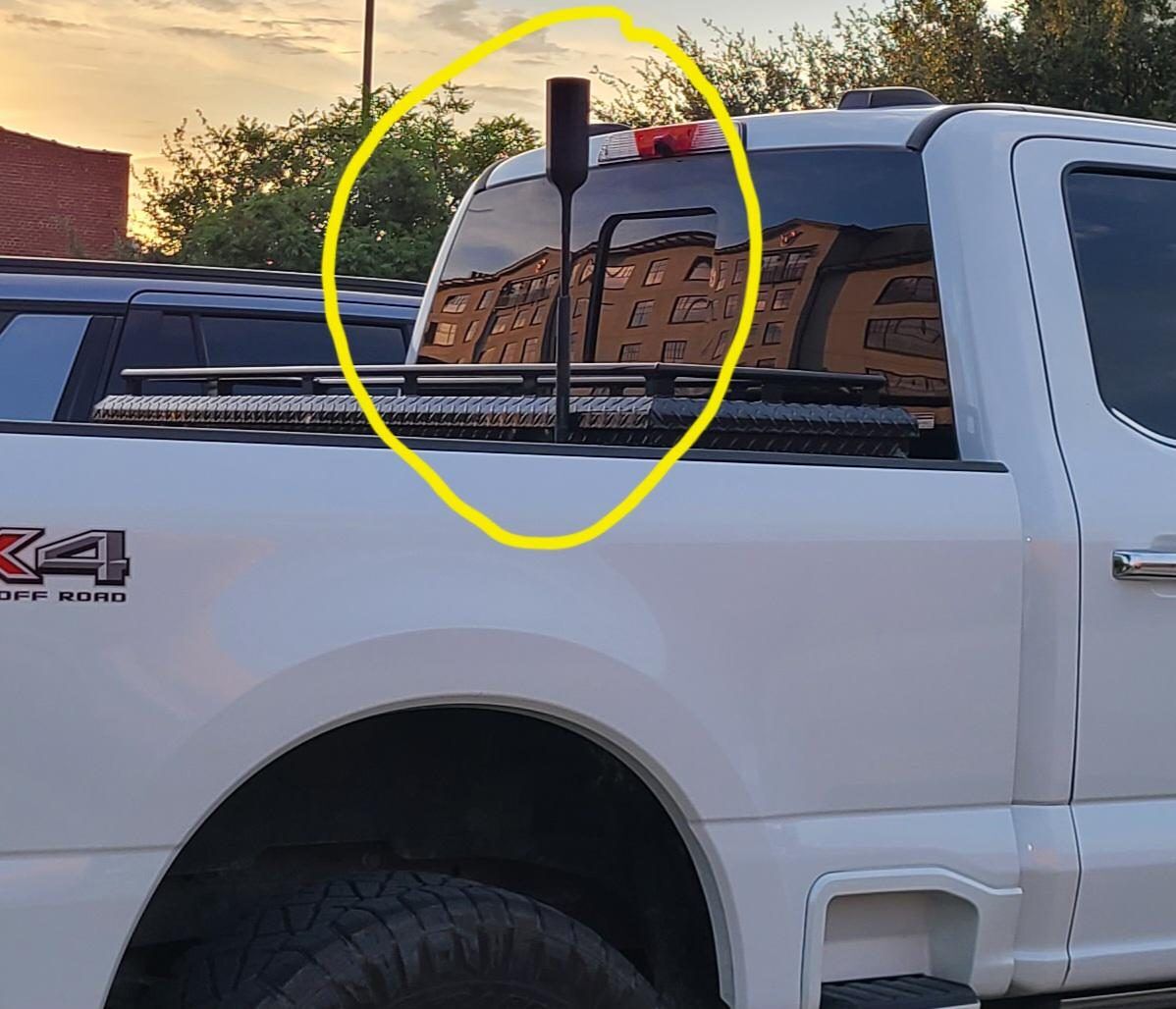Ever Noticed That Tall Rod Behind a Truck Cab? Here’s What It Actually Does
For many drivers, spotting a tall, thin rod rising from the back of a pickup truck cab sparks curiosity. At first glance, it might look like a leftover relic from the CB radio days, or perhaps just an accessory added for style. But in reality, these poles serve a very practical purpose in today’s increasingly connected world.
These antennas are part of mobile signal booster systems designed to keep drivers connected even in remote areas. While they may resemble the old-school communication tools of long-haul truckers, they play a far more modern role: catching and amplifying weak cellular signals so phones and devices can function where coverage is poor.

What Is That Pole, Really?
The rod you see on trucks is an external antenna, the most visible component of a signal booster system. Think of it as a net that reaches out to grab weak or distant cellular signals — the kind your phone’s built-in antenna might not detect.
When a truck is out on a remote road, in the mountains, or deep in the countryside, a driver’s phone often struggles to stay connected. The external antenna captures whatever faint signals exist and feeds them into the booster system inside the vehicle.
How a Truck Signal Booster Works
A typical system has three main parts:
-
The External Antenna – The tall rod outside the truck captures any available signal, even extremely weak ones.
-
The Signal Amplifier – Installed inside the vehicle, this device boosts the captured signal, strengthening it to a usable level.
-
The Internal Antenna – Located inside the cab, it rebroadcasts the amplified signal to phones, tablets, and mobile hotspots.
The result is clearer phone calls, faster mobile data speeds, and fewer dropped calls — benefits that can make all the difference when driving through areas with limited coverage.

Why Rural Drivers and Off-Roaders Depend on Them
For city drivers, the sight of these antennas might seem unusual. But for people who live or work in rural areas, they are an essential tool. Reliable connectivity is not just a matter of convenience; it can be a matter of safety.
Truckers, contractors, ranchers, and outdoor enthusiasts often travel through regions where cell coverage is spotty at best. Being able to call for help, check directions, or send a message in these environments is critical. Signal boosters ensure that drivers are not left stranded without communication options.
Even recreational drivers find them valuable. Off-road adventurers, campers, and cross-country travelers appreciate the ability to stay in touch with family, access GPS, and even stream music far away from urban networks.

More Than Just Phone Calls
While many associate these boosters with clearer phone calls, their functionality goes beyond voice. Boosters also enhance mobile hotspots, allowing multiple devices to connect to the internet in areas without Wi-Fi.
Popular models such as the weBoost Drive Reach or HiBoost Travel 3.0 support several devices simultaneously, making them ideal for work crews, families, or groups traveling together. With this setup, passengers can access the internet, send emails, or enjoy entertainment without constant disruptions.
A Modern Twist on a Classic Look
The tall rods may bring to mind the CB radios that truckers relied on for decades. CB (citizens band) radio antennas once filled highways, providing drivers a way to share traffic alerts, road conditions, and conversation. While CB radios are still in use, smartphones have taken over as the dominant communication tool, requiring stronger and more stable signals.
Signal booster antennas preserve that familiar look while serving an entirely different purpose. In a way, they are the modern evolution of the CB antenna — not for truck-to-truck chatter, but for powering the constant digital connectivity of today’s world.

The Cost and Value
A complete booster system usually costs between $300 and $500. For some drivers, that may feel like a luxury item. But for those who rely on consistent communication — whether for safety, work, or peace of mind — the investment is often worth it.
The value becomes clear when considering scenarios such as:
-
Calling emergency services in a remote area
-
Accessing GPS navigation when far from cell towers
-
Maintaining contact during long-haul deliveries
-
Staying productive while traveling for work
-
Ensuring family and friends can always reach you
Compared to the frustration and potential risks of being cut off from service, many drivers see the expense as a practical necessity.

Why You’re Seeing Them More Often
The rise in popularity of remote work, outdoor recreation, and off-the-grid travel has made signal boosters increasingly common. Drivers want to enjoy nature or reach distant locations without sacrificing the ability to connect when necessary.
As more people take to the roads for cross-country trips, overlanding adventures, or jobs that demand travel through rural areas, the presence of these antennas is likely to grow. They are quickly becoming part of the standard toolkit for modern pickup truck owners who prioritize both mobility and safety.

Conclusion
The next time you see a tall rod standing behind the cab of a pickup truck, you’ll know it’s not just a leftover piece of technology or a stylistic choice. It’s part of a system that helps drivers stay connected, no matter how far they travel from cell towers.
In essence, it’s more than a pole — it’s a lifeline on wheels. For those who value safety, communication, and uninterrupted access to information, this discreet but powerful tool represents the bridge between the rugged independence of the open road and the digital connectivity of modern life.
